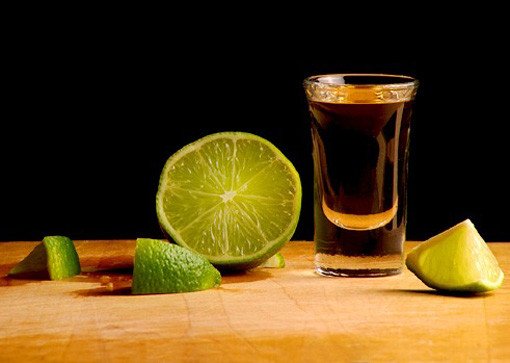
Aside from knowing it will get you trashed, we’re guessing what you know about tequila could fit into a shot glass. For starters, it’s a classier booze than you might think. In fact, quality tequila can compare to high-end Scotch’s and cognacs when it comes to complexity and robustness. Bet you didn’t know that, did you? Here are seven more things you can learn about tequila …
#1. Tequila Is The National Drink of Mexico
Like bourbon, tequila has something called “denomination of origin,” meaning it can only be made in one place — Mexico (obviously). But more specifically, it is almost always produced in the high country surrounding the city of Tequila, in the central Mexican state of Jalisco, as well as a few other nearby areas. And it has to be made from the blue agave plant.

#2. The Tequila-Making Process Takes Years
Blue agave is a succulent, just like your girlfriend’s … houseplants. The agave plants are grown on plantations, and after eight to 10 years, their cores, or pinas — so called because they look like pineapples, and pina is Spanish for pineapple — are harvested manually by a person known as a jimador.
Also: How To Not Kill Your Houseplants
At this point, the pinas weigh between about 60 and 130 pounds and will produce one liter of tequila for every 17 or so pounds of agave. The pinas are split open and steamed in a pressure cooker, and the resulting juices flow into a steel vat for fermentation, which can take up to a few days. The liquid then needs to be distilled twice before it can be called tequila.
#3. There Are Five Types Of Tequila
That’s how many the Mexican government recognizes. Here’s a breakdown:
• Tequila silver, or to be more proper, plata or blanco tequila, is the blue agave’s juice in its purest form, as the liquor is un-aged, and bottles are often filled directly after distillation. It tastes pretty mild, as tequilas go.
• Tequila gold, which you most likely pounded (and later regurgitated) in college, often has colors and flavors added to it, and is the typical “rail” tequila you’ll find in bars.
• Reposado is the most popular tequila in Mexico; it’s aged in oak barrels for two to 11 months, and takes on some of the golden coloring from the wood as well as some of the flavors.
• Anejo must be aged for one year, and like reposado, takes on the colors and flavors of its wooden casks, though since it has aged longer, it’s more complex and robust. Anejo is considered a true sipping tequila.
• Extra anejo was first recognized as a class of tequila in 2006, and must be aged for a minimum of three years in a cask no larger than 600 millimeters. It’s said that the flavors in extra anejo become so rich and complex that it starts to become difficult to distinguish it from other high-end, aged liquors.

#4. You Can Sip It, Too
There’s a time and a place to shoot tequila, but when you’re drinking the good stuff it should be treated like any other high-end liquor; pour about four ounces into a lowball or a snifter, and consume neat or on the rocks. And remember to sip not gulp.
Also: What’s The Difference Between A Bartender and Mixologist?
#5. Yes, You Can Pair Tequila With Food
It comes down to preference, but as a guideline try to match the intensity of the flavor of your tequila with the intensity of the flavor of your food. Blanco meshes well with seafood and salads, while reposado can usually stand up to traditional Mexican fare like stuffed poblanos or green chili pork stew. Try pairing anejo or extra anejo with dessert.

#6. No, It’s Not An Upper
Some people believe tequila is an upper, and those some people would be dead wrong. Like all alcohol, tequila is a depressant. The misperception most likely arises from the environment in which tequila is often consumed. Unlike, say, a scotch or red wine, you’re probably used to drinking tequila in either shot form or in margaritas — both of which are generally considered party drinks. And when you’re partying you’re probably more jovial than when you’re sipping wine and watching reruns of Law & Order: Special Victims Unit.
Also: What’s The Difference Between A Bartender and Mixologist?
#7. If There’s A Worm, It’s Not Tequila
You’ll only find worms in bottles of tequila’s gnarlier cousin, mescal, which comes from the maguey plant and is made in and around the Mexican state of Oaxaca. (And no, you should never eat the worm.) Far from being some ancient tradition, the worm-in-the-bottle thing was actually cooked up by a Mexican entrepreneur in the mid-20th century as a marketing tool to entice dumb gringos like you to buy his booze.
The worm itself is an agave worm, which is a butterfly larva that is often found in agave and maguey plants’ pinas. It’s thought by some that the worms are mashed up during the distillation process and actually contribute to both tequila and mescal’s flavor and color. Which is sort of gross. But not quite as gross as eating an embalmed butterfly larva that’s been sitting in a bottle of shitty mescal for God knows how long.







